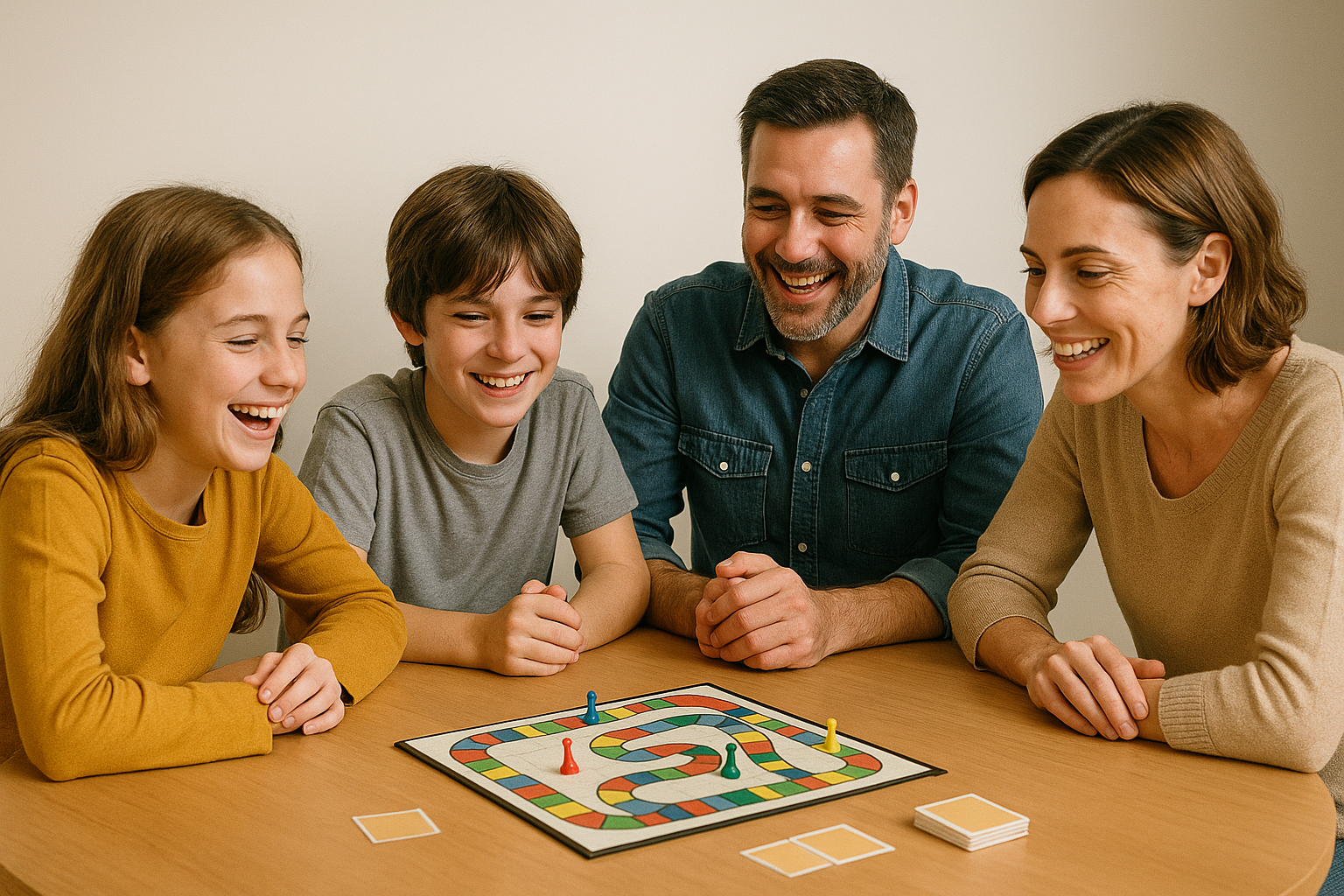Why Busy Families Struggle to Connect
In today’s fast-paced world, families are busier than ever. Work deadlines, school assignments, sports practices, and endless to-do lists often leave little room for meaningful connections. As days get filled with obligations, parents and children alike can feel increasingly disconnected, leading to frustration and guilt.
It’s not just about lack of time — it’s about the quality of time spent together. Even if a family is physically in the same space, distractions like phones, TV, and work emails can prevent genuine connection. That’s where the LOWER method (Label, Own, Wait, Explore, Resolve) from ThatsFrustrating.com comes in — a simple, step-by-step framework to help families turn frustration into opportunity.
The LOWER Method: 5 Steps to Strengthen href=”https://thatsfrustrating.com/blog/busy-familys-stunning-time-saving-solutions”>Family Connections
The LOWER framework is designed to help families acknowledge frustrations, regulate emotions, and actively build stronger bonds. Let’s break down each step.
L – Label the Frustration
The first step is to name the frustration clearly. When the demands of work, school, and extracurricular activities overshadow family bonding, it’s normal to feel disappointed. Simply saying, “That’s frustrating when our schedules don’t allow time together” can diffuse tension and open the door to solutions.
Common Signs of Disconnection
- Guilt about missing family milestones
- Avoiding family activities due to exhaustion
- Overwhelmed by a cluttered calendar
When these feelings go unaddressed, they can build resentment, creating barriers in communication and connection.
👉 Family planner app or shared digital calendar tool (e.g., Cozi Family Organizer on Amazon) to help families align schedules.
O – Own the Frustration
Once frustration is labeled, the next step is to own it. Instead of blaming others, acknowledge your own emotions:
“I feel frustrated when I can’t seem to find time to connect with my family.”
Why Ownership Matters
- Reduces unnecessary conflicts
- Helps regain control in chaotic situations
- Fosters empathy and better communication
Taking ownership doesn’t mean ignoring external pressures. It simply means choosing how to respond rather than reacting impulsively.
👉 Journals or mindfulness tools (link for a gratitude journal) as aids for self-reflection.
W – Wait: The Art of Pausing
When emotions are high, it’s easy to lash out. The Wait step encourages a pause before reacting, which can completely shift the outcome of a stressful family moment.
Benefits of Pausing
- Reflection: Creates space to think before responding
- Regulation: Helps manage emotional triggers
- Clarity: Prevents impulsive decisions and unnecessary conflicts
Simple Pausing Techniques
- Mindful breathing: Take 5 deep breaths before responding
- Count to ten: A tried-and-true strategy for calming down
- Step away: Take a short walk or leave the room briefly
👉 Emotional Regulation: Effortless Tips for Mindful Parenting
👉 Meditation app (like Headspace or Calm) that families can use together.
E – Explore: Strategies for Quality Time
This is where families shift from frustration to action. After labeling, owning, and pausing, it’s time to explore practical ways to reconnect.
1. Schedule Dedicated Family Time
- Weekly family night with board games, movies, or shared meals
- Tech-free dinners where everyone is fully present
2. Collaborate on Activities
- Cook meals together (teaching kids life skills in the process)
- Work on a family project such as gardening, puzzles, or DIY crafts
3. Prioritize Quality Over Quantity
- Focus on short but meaningful conversations
- Schedule one-on-one time with each family member
4. Manage Technology Wisely
- Establish tech-free zones at the dinner table or before bedtime.
If technology tends to be a recurring battle, see how other parents have lowered frustration here:
👉 Reducing Digital Distractions for Families
- Use devices intentionally (e.g., video calls with grandparents, family trivia apps)
👉 More tips on can be found at MomLifeToday or Psychology Today
R – Resolve: Plan for Lasting Change
Finally, the Resolve step is about turning new habits into long-term family routines. A good plan balances realistic goals, open communication, and flexibility.
Building a Sustainable Family Plan
- Set Realistic Goals – Start small (like one tech-free dinner a week)
- Communicate Openly – Involve kids and partners in decisions
- Review & Adjust – Check in regularly and tweak routines as needed
- Celebrate Successes – Even small wins keep motivation alive
👉 wall calendars, family apps, or coaching programs for accountability.
Frequently Asked Questions (FAQs)
1. How can busy parents realistically find family time?
Start small. Even 15 minutes of intentional family connection (like reading together before bed) can make a difference.
How Many Minutes of Quality Family Time Do Kids Really Need Each Day? (A LOWER-Method Guide)
2. What if kids resist family time?
Involve them in the planning. Let them choose activities or meals — ownership creates buy-in.
3. Does the LOWER method work for blended families or single parents?
Yes! The steps are flexible and adaptable for all family structures.
4. How do we handle tech distractions during family time?
Set tech-free zones and times, and lead by example. Use tech for bonding, not just distraction.
5. Can this method reduce parental burnout?
Absolutely. The LOWER method helps parents regulate emotions, communicate better, and avoid burnout by creating intentional moments of rest and joy.
6. How long does it take to see changes in family connection?
Many families notice improvements within 2–3 weeks of consistent practice, but lasting change comes with patience and commitment.
Final Thoughts: Building Stronger Families with LOWER
Family time doesn’t have to feel impossible. The LOWER framework gives busy families a practical and empowering roadmap:
- Label frustrations honestly
- Own emotions without blame
- Wait to respond mindfully
- Explore creative bonding strategies
- Resolve with a sustainable plan
By practicing these steps consistently, you can transform everyday frustrations into meaningful opportunities for growth, laughter, and love.
👉 For more insights, visit ThatsFrustrating.com and explore practical guides on managing life’s everyday challenges.





Leave a Reply